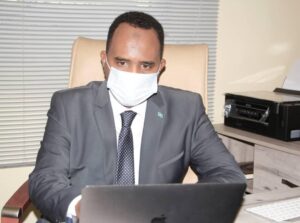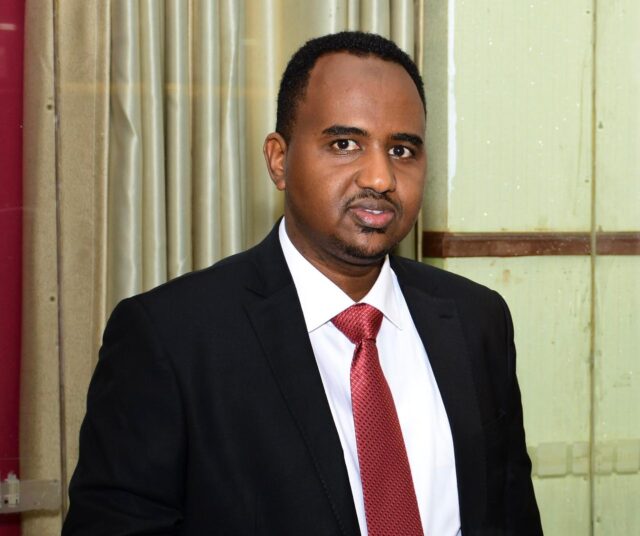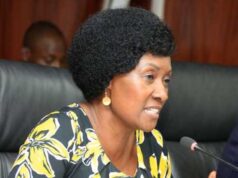At the onset of 2020, few of us anticipated what lay ahead. The Covid-19 pandemic declared in March 2020 caused unprecedented disruptions to all spheres of life and led to uncertainty and apprehension globally. While COVID-19 has and continues to have devastating impacts on every sphere of life across communities around the globe, women and girls have been particularly affected.
In Africa, women and girls have largely borne the brunt of the pandemic, as the virus has exacerbated already-existing gender inequalities, laying bare serious fault lines in safety, physical and mental health, education, domestic responsibilities, and employment opportunities. The virus has massively disrupted women’s lives as decades of progress towards women’s rights and gender equality in Africa has begun to unravel.
The covid-19 pandemic and measures put in place by governments to halt its spread have impacted women, men, girls and boys differently. There has witnessed a significant increase in reports of gender based violence (GBV), giving rise to GBV ‘shadow pandemic,’ while anecdotal evidence suggests that the number of child marriages and other harmful practices against girls, as well as teen pregnancies has risen.

On a Covid-19 study on women and men as gleaned from research conducted during 2020, as well as the Computer Assisted Telephonic Interviews (CAT) Rapid Gender Assessments (RGAS) executed by United Nations Women, United Nations Population Fund (UNFPA) and partners in seven countries in the East and Southern Africa Region, more than 60 percent of women and men in Ethiopia, Kenya, Malawi, Mozambique and South Africa experienced a complete loss or decline in personal incomes due to the pandemic, deepening already high poverty rates in many countries and entrenching the gender disparity of women being more likely than men to live in extreme poverty.
The female poverty rate, pre-covid-19 was projected to be 10 percent in 2021, but the figure is now projected to reach 13 percent. Child healthcare services, maternal care for pregnant women, services relating to chronic illnesses, and sexual and reproductive health care, including family planning and HIV prevention services, were negatively affected by the pandemic.
Read: Best Courses That Pay Women More Than Men in the World
In Kenya, nearly 60 percent of women and more than 50 percent of men could not access health care services for their children. In South Africa and Mozambique, less than 20 percent of women accessed family planning and other reproductive health services during the pandemic, with some staying away out of fear of contracting the virus. Maternal and child health is one of the areas likely to regress.
School closures have had devastating effects on girls like enrollment and learning outcomes decreased or dissipated. Schools are among the strongest social networks for adolescent girls, providing peers and mentors and when girls are cut off from these networks, their risk of violence increases.
In contexts where gender norms limit girls’ access to the tools needed for remote learning such as computers, smartphones and the internet, they may fall behind their male peers while schools are closed. And when schools do re-open, many girls may not return, as observed during the Ebola crisis.
In Somalia, Somali women have stepped in to meet the immense needs of communities due to death and displacement of male relatives from conflicts largely. Women head about half of all households and, across the country generate an estimated 70 percent of household income. The gender inequalities that prevent women from fulfilling their potential make the country vulnerable during crises. Women disproportionately work in the informal economy with no protection in case they become sick or lose income.
During the many lock-downs, many women working in the streets of Mogadishu engaged in small scale business, selling second hand clothes, a variety of foods and drinks were affected; the curfew in place reduced the time to hawk goods and reduced human movement in Mogadishu diminishing demand.
The closure of airports and seaports too meant that many of the goods they sell including candies and clothes are no longer available. Consequently, then, the women have lost their income thus threatening their own well-being and their many households. At the same time, women’s lower literacy rates – 36 percent for females ages 15 and over, compared with 44 percent for males – and access to technology makes it even more difficult to provide them with the information they need to protect themselves and their families from infection.
When women fall ill or their care burden becomes overwhelming, families will begin to pull young girls out of school to help. This will be at the expense of education and skills development of Somali women and girls. High levels of gender-based violence, exacerbated by decades long conflict compound these challenges and undermine women’s capacity to care and provide for their families.
For these and other reasons, gender inequalities will intensify the effects of the pandemic on women and girls in Africa and compound the Continent’s many other problems. For Africa to succeed, the rights and privileges of the girl child must be restored fully.
The writer, Dr. Abdiqani Sheikh Omar is a Senior WASH Strategic Policy Advisor at the Ministry of Energy and Water in Somalia and Former Director General at Ministry of Health and Human Service, FGs.









